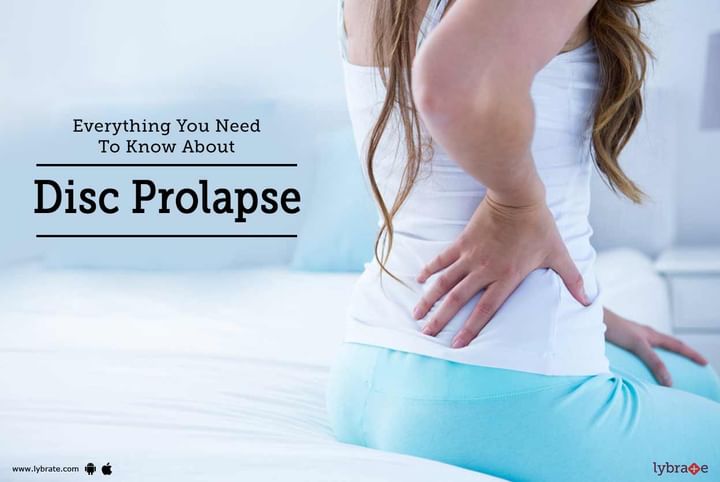Everything You Need To Know About Disc Prolapse
A disc prolapse or herniated or slipped disc refers to the condition of the spine in which the outer fibers (the fibrous ring) of the intervertebral disc gets injured. It makes the soft central portion known as the nucleus pulposus bulge out of its enclosed space. This ruptured material then enters the spinal canal, putting pressure on the spinal cord as well as the spinal nerves. A disc prolapse can be caused by several reasons. These include age-related degeneration of the spine, trauma or accident, injuries incurred while lifting heavy objects, strain, and bad posture.
The disc prolapse mainly occurs in young and middle-aged men and women and it can affect a person anytime. In some cases, it takes months to surface while in others, it can erupt over several weeks. These cases are the result of the gradual weakening of the outer fibers or sedentary lifestyle that puts constant pressure on the disc, making the fibrous ring bulge out. In case of accidents and injuries, when one falls from a major height or bends forward putting high stress on the intervertebral disc, the eruption is instant and the disc sustains severe injury.
Spots of disc prolapse: A disc prolapse can occur in three places – Lower back (lumbar spine), neck (cervical spine), and mid-back (thoracic spine).
Signs and symptoms of disc prolapse: Disc prolapse is normally characterized by pain in the above-mentioned places but it can also be painless. The symptoms of slipped disc include numbness and tingling sensation in arms and legs, weakness in arms or legs, pain behind the shoulder or in the buttock, running pain in one or both arms and legs, loss of control over bowel and bladder movement (in extreme cases), numbness in genital area, and impotence in men (in extreme cases).
Diagnosis and treatment: A slipped disc can be diagnosed through an X-ray, CT scan, or MRI scan. The neurosurgeon or spinal surgeon prescribes the course of treatment after proper diagnosis. In most of the cases where the condition is a result of bad posture or sedentary lifestyle or age-related degeneration, the treatment involves administration of painkillers and physiotherapy. In such cases, the symptoms go away within six or eight weeks. It is only cases of trauma or severe injury that need surgical intervention.
Prevention: A disc prolapse can be prevented in a lot of cases through counseling and education. Many times, people are not aware of the symptoms or tend to take back or neck pain lightly, which aggravates the condition leading to more damage and late recovery. Also, bad posture and sedentary lifestyle are known to put pressure on the spinal cord, which can cause slip disc. So, if one is aware of these facts, one can avoid disc prolapse. Last but not the least, regular exercise and adequate rest keep the back and bones healthy. It is the best prevention against back pain and disc prolapse. So, one should keep it in mind and follow it as well.
In case you have a concern or query you can always consult an expert & get answers to your questions!



+1.svg)
